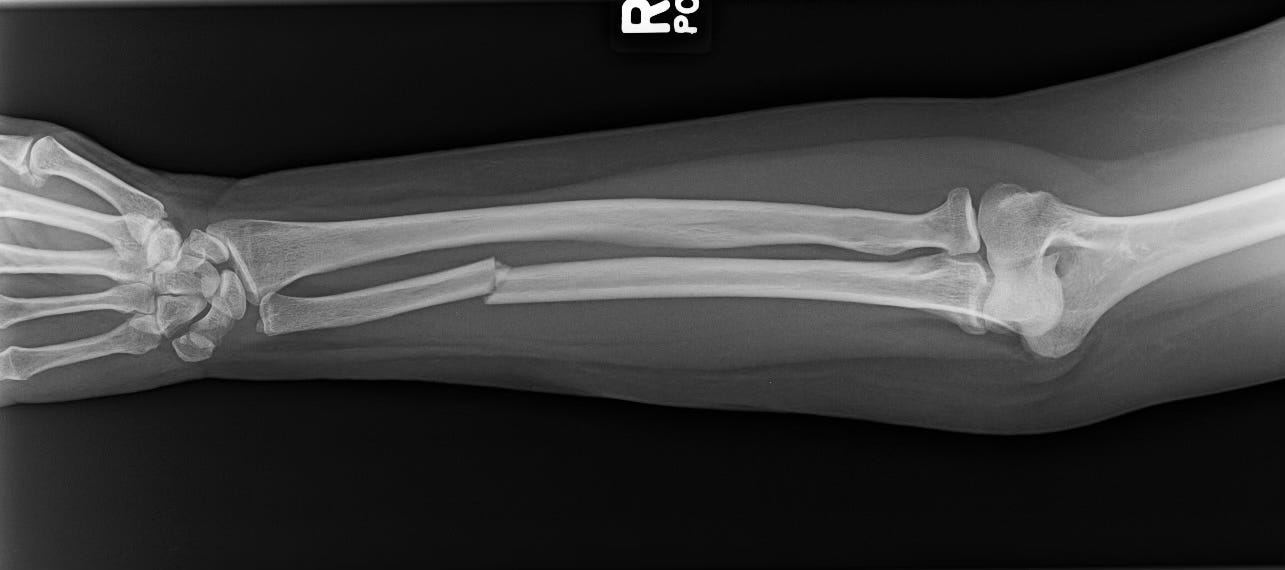The Monteggia fracture (or fracture-dislocation) is a proximal ulnar fracture accompanied by radial head dislocation. It can be caused by a direct blow or a fall on an outstretched hand and results in elbow deformity, swelling, and pain with supination or pronation. Radial head dislocation may be subtle; in the normal elbow, a line drawn through the center of the radial head and shaft should intersect the capitellum on all views. Suspect dislocation if this is not the case.
Most pediatric fractures can be managed by closed reduction. Adult fractures usually require operative fixation.
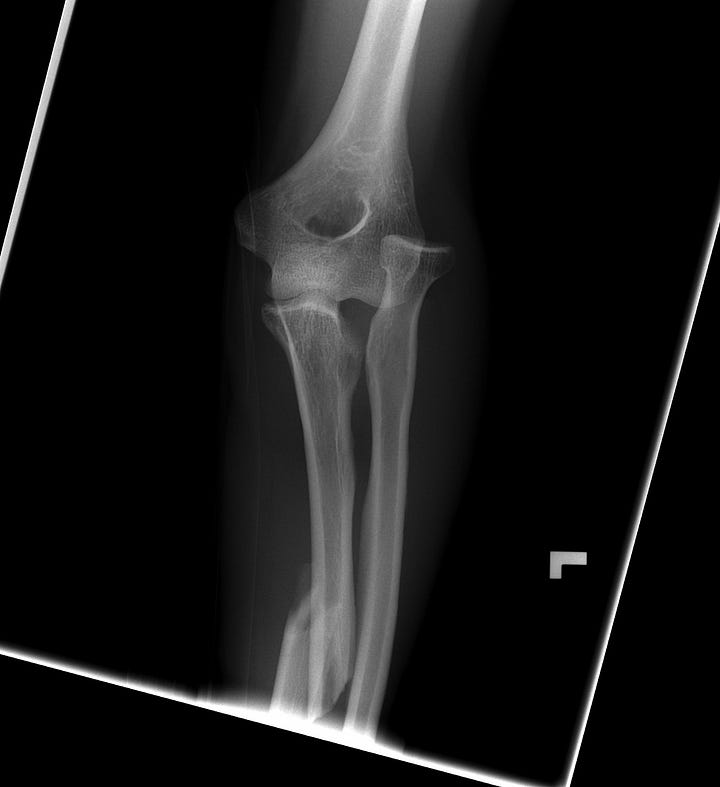
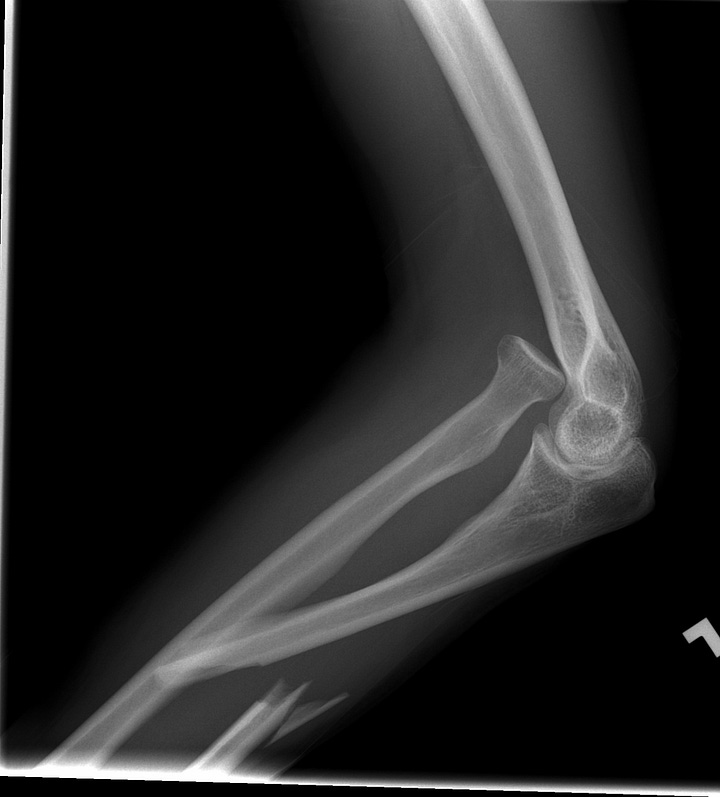
Monteggia fracture (adult). Midulnar diaphysis fracture with dorsal and ulnar displacement of the distal fragment, override, and associated volar/radial dislocation of the radial head.
Monteggia fracture (pediatric). Midulnar incomplete fracture with apex volar angulation and volar dislocation of the distal radius relative to the capitellum.
The Galeazzi fracture is a distal radial diaphysis fracture with dislocation of the distal radioulnar joint. Galeazzi fractures are three times as common as Monteggia fractures. The mnemonic MUGR ( “Monteggia–Ulna, Galeazzi–Radius,”) aids in recalling which bone is fractured in these injuries.
Galeazzi fractures are usually seen in children between 9 and 12 years of age and result from impact to the dorsolateral wrist or a fall onto an outstretched hand.
Radiographic findings include a transverse or oblique distal radial diaphysis fracture, widened distal radioulnar joint, and distal subluxation of the ulna relative to the radius.
Urgent operative fixation is normally required for adults with Galeazzi fractures. Children younger than 10 years may be treated with closed reduction and splinting, but they should have prompt follow-up orthopedic evaluation.
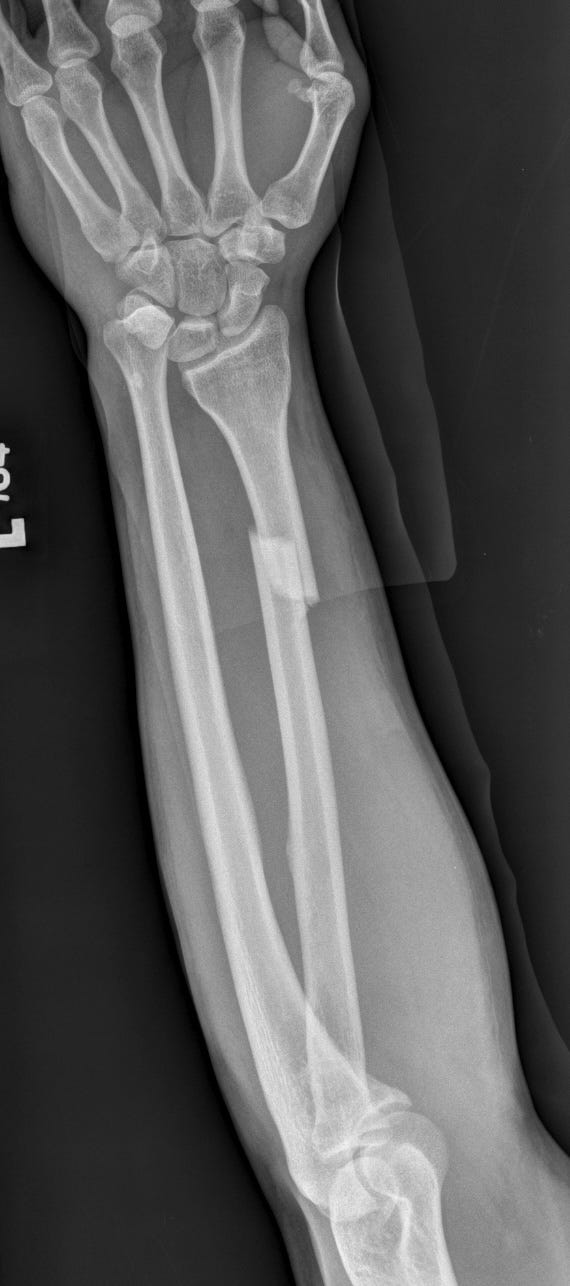
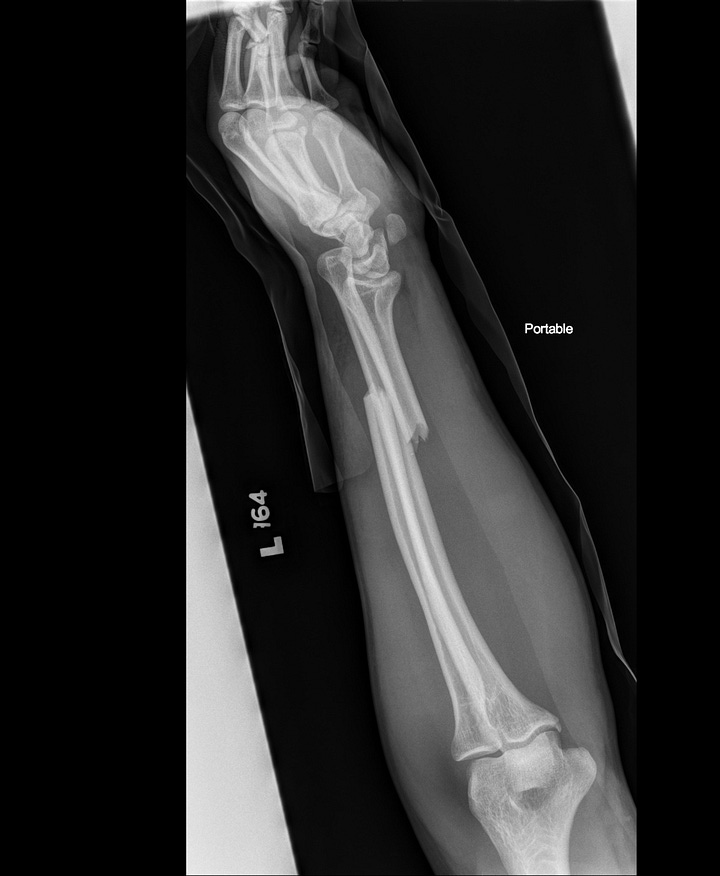
Galeazzi fracture (adult). Transverse distal radius fracture; dorsal displacement of the distal fragment, override and disruption of the DRUJ with dorsal ulnar dislocation.
The nightstick fracture is an isolated mid-shaft ulnar fracture that results from direct trauma to the ulna. In cases of assault, it is a defensive fracture that occurs when a victim attempts to protect his face from an overhead blow (historically delivered via a police officer’s nightstick). In contrast to the similar-appearing Monteggia fracture, the radiocapitellar relationship is normal.
Nondisplaced fractures are treated with splint immobilization. Open reduction and internal fixation is usually necessary when displacement is greater than 50% or angulation is greater than 10° in any plane
Nightstick fracture. Transverse fracture at the junction of the mid- and distal ulnar thirds with slight ulnar displacement of the distal fragment. Associated forearm soft tissue swelling..



